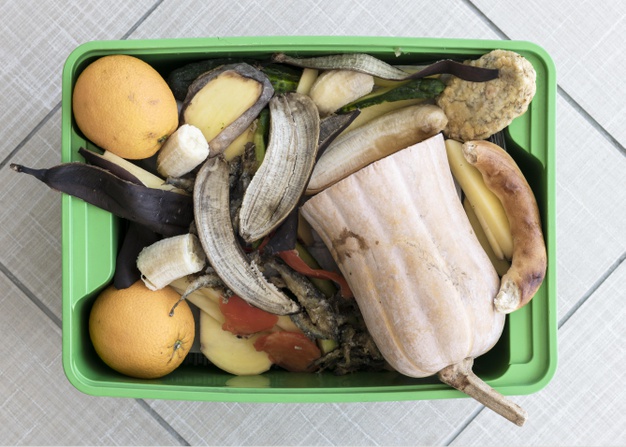Many people mistakenly believe that achieving a sustainable lifestyle is beyond their reach. However, it doesn’t require a total shift in the way you live. The key is simply recognizing that your choices and actions, no matter how minor, can impact the world around you. Here are three easy steps you can take that put you on the path towards living sustainably.
1. Avoid Wasting Food
Every year, Americans throw away an average of 40% of their food. Not only does this carry a large financial cost ($162 billion each year), it also takes a large toll on the environment. Nearly all food waste ends up in landfills, breaks down, and eventually causes greenhouse gasses to climb. Additionally, the resources that went into producing that food are essentially wasted. This includes land, water, energy, and fuel. Simply put, when you throw away food, you throw away precious resources.
To reduce food waste, you need to start planning your meals and buying only the ingredients you know you will use. Don’t go grocery shopping without a list, and never make the mistake of shopping for food when you are hungry! It’s also best to store food in air-tight containers that can prevent your food from spoiling too soon.
If you still have leftover food to dispose of despite your best efforts, try composting at home rather than adding it to the trash. Keep a bin in your freezer to collect leftover scraps all week, and when the container is full, empty it into a composting area in your yard. However, it’s important to note that not all foods are suitable for composting, and it’s essential to know which ones are safe to add to your compost pile. If you’re unsure about what can and cannot be composted, hop over here to learn if you can put bread in compost and get other useful tips to get started.
2. Think Before You Eat
Did you know that nearly 25% of all greenhouse gas emissions come from the food system? Making more deliberate choices about what you eat can make a significant impact.
For example, eating chicken causes more carbon emissions than fish and vegetables but far less than beef. A 6-oz serving of beef emits about 330 grams of carbon while the same amount of chicken, fish, and vegetables emit 50-60 grams, 40 grams, and 14 grams, respectively. By arming yourself with these facts and consciously making wiser decisions about what you consume, you can be part of the solution.
Even if you don’t want to give up red meat completely, you can certainly shift your diet to more eco-friendly foods by trying to integrate more vegetables and fish into your diet. Not only will you be helping the environment, but you will also be improving your own health.
3. Reduce Your Consumption of Plastic
Your plastic footprint is likely much larger than you think. There are 300 million tons of plastic produced every year, and much of it ends up in our landfills and oceans.
Single-use plastics are particularly bad. These items are meant to be used only once and then thrown away. Plastic straws, bottles, utensils, packaging, and bags all fall within this category. Our throwaway culture prioritizes convenience over every other consideration, and the result is a planet overwhelmed with waste.
You can make a difference by using reusable bags and bottles, storing leftovers in glass containers, shopping from stores that are responsible with packaging, and bringing your own travel mug to the local coffee shop. Also, try to avoid single-serve food options as well as disposable travel toiletries. One large container of yogurt is a more sustainable choice than 6 individual-size containers, and refilling travel-size bottles with shampoo is more responsible than using new travel-size disposable containers each time.
Living a sustainable life is not unattainable or difficult. The first step is to simply think more deliberately about consumption of resources and creation of waste. Choosing a more responsible diet, avoiding excess food waste, and reducing your consumption of single-use plastic are great steps that will have you well on the way to living a sustainable life!


